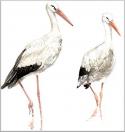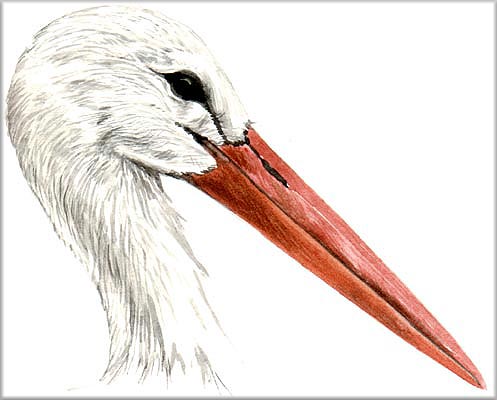White Stork - Ciconia ciconia
Large white bird with black remiges, red bill and legs, long neck held straight out in flight, short tail.
Famous for its life-long fidelity, regal courting ceremonies and greeting to its partner, the Stork is undoubtedly one of the best known and loved birds: the largest bird (at least in Europe) adapted to living in close contact with man. It mainly feeds in paddy fields, irrigated meadows, ploughed fields and open wetlands.
Its diet is very varied, it usually preys on small mammals, amphibians, reptiles, insects and earthworms. It hunts on dry as well as flooded grounds as long as the water level does not exceed a few centimetres.
In common with several birds of prey, the White Stork has a great gift of gliding, and it shares the same migratory routes which take it across Gibraltar and the Bosporus, where twice a year concentrations of thousand of birds offer a truly magnificent spectacle.
In Italy the White Stork is much more common in people's imaginations than in nature. After its extinction in Italy in the XVII century through hunting and nest destruction, the species is now trying to re-colonise the peninsular.
It seems to be a very slow process, unfortunately hindered by vandalism and poaching.
Nevertheless, thanks to the efforts of environmental organisations (LIPU and WWF) who have undertaken re-introduction of the species, the number of nesting pairs in Italy is constantly on the increase.
Since 2005, a pair of White Storks has been nesting at Fucecchio on the edges of the marsh, and in 2009 a second nest was built at Monsummano Terme: many of these individuals, which were ringed, come from the Carapax Centre at Massa Marittima (GR), which collaborates in the project for reintroducing the species in nature.





